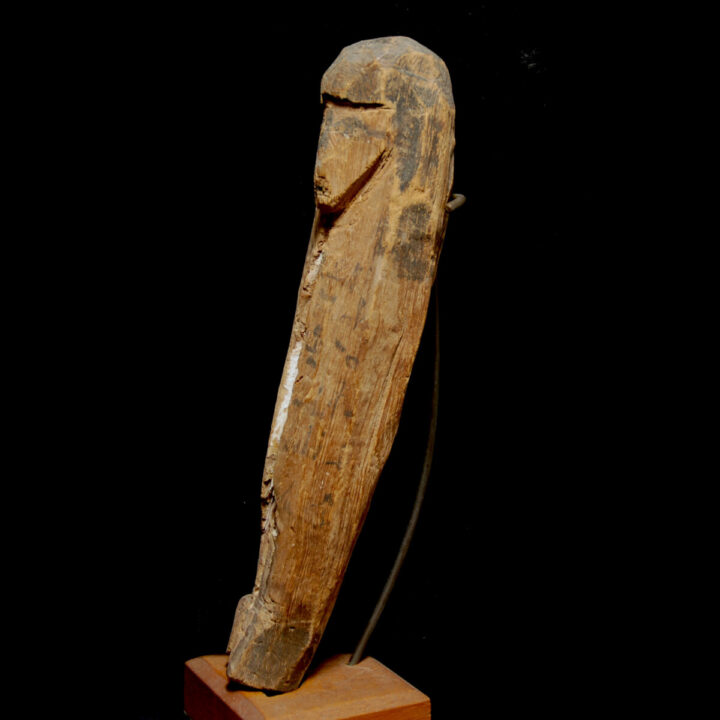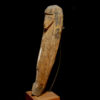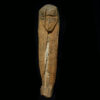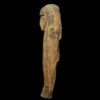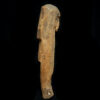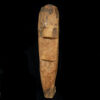Published Stick-Shabti
Culture: Egyptian
Period: 2nd Intermediate Period to early New Kingdom, 17th-18th dynasty, 1580-1292 B.C.
Material: Wood
Dimensions: 20.8 cm high
Price: 6 600 Euro
Ref: 1428
Provenance: Private collection Hugh Stanley Russell (1924-2000), acquired between the 1950s to 1970s. Auctioned with Bonhams London on 20 October 2005, lot 8. There acquired by the Egyptologist Paul Whelan, who published the shabti in 2007.
Condition: A vertical crack runs along the entire body and the right face half, which in any case exists since ancient times and is stable. Painting is beautifully preserved, the writing is faded.
Description: Rare, wood shabti, which is called "stick shabti" in literature. The roughly, in form of a stick, worked out statuettes were produced in the late 17th dynasty to the early 18th dynasty in Thebes. While regular shabtis were placed in the tombs and had functions, to work for the deceased, stick shabtis were always found in the aboveground cult chapel of Egyptian tombs. They represent family members and friends of the deceased, who should symbolically be close to him. This stick shabti has a v-shaped face with black painted eyes, nose, and mouth. It also has a black painted wig. The body is slightly bent and tapering towards the feet. A short kilt is worked out in relief at the back. At the front a hieratic inscription with the names of the owner and the founder is recognizable, which, however, can no longer be deciphered. The rare shabti is published in: Paul Whelan „Mere Scraps of Rough Wood? 17th- 18th Dynasty Stick Shabtis in the Petrie Museum and other Collections”, London 2007, pages 131 to 132. On an old wood base.



